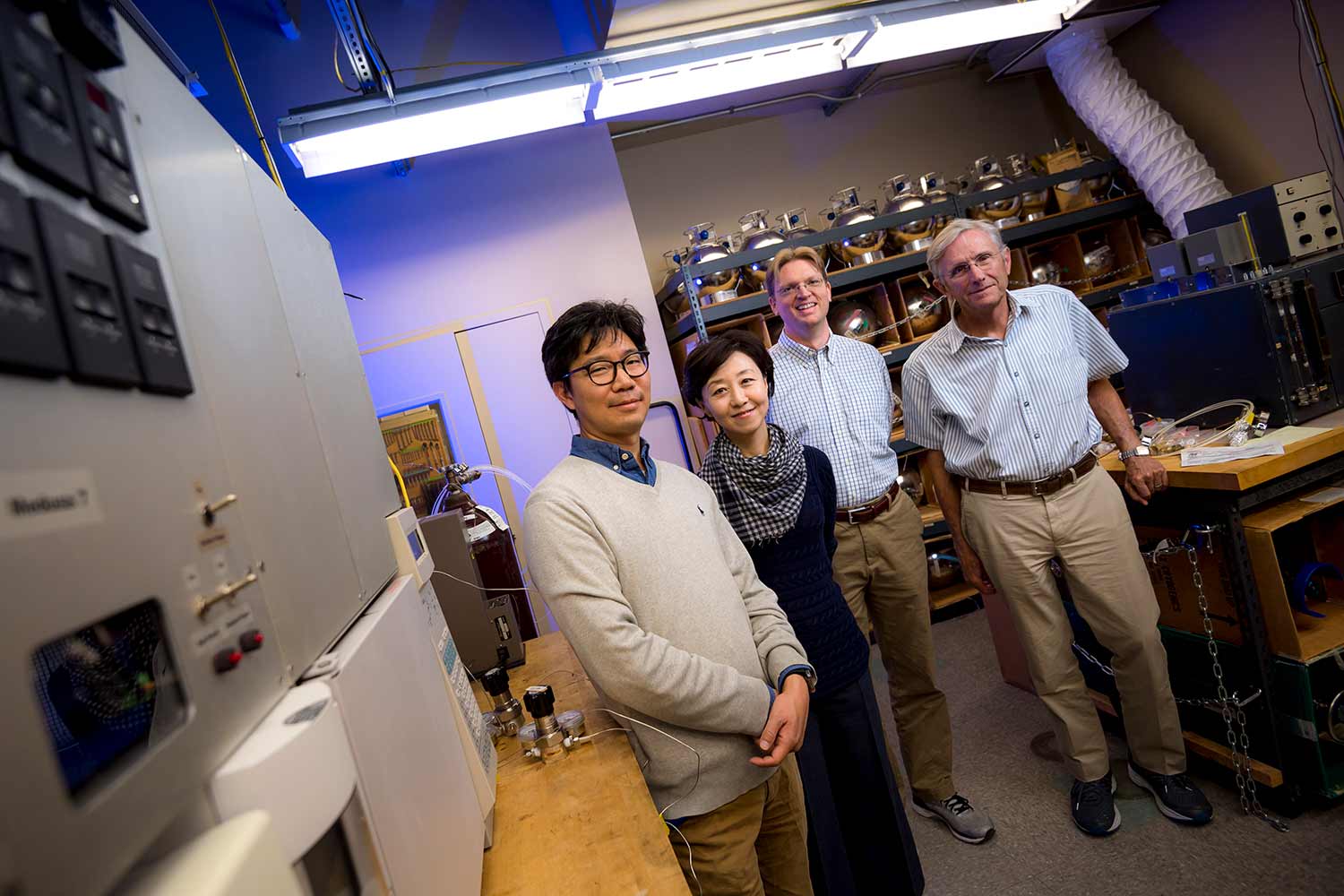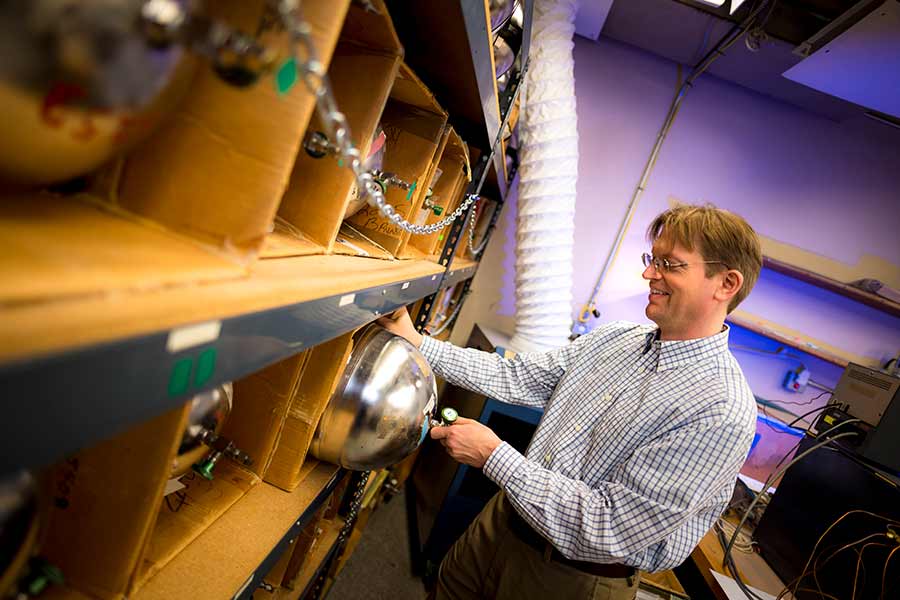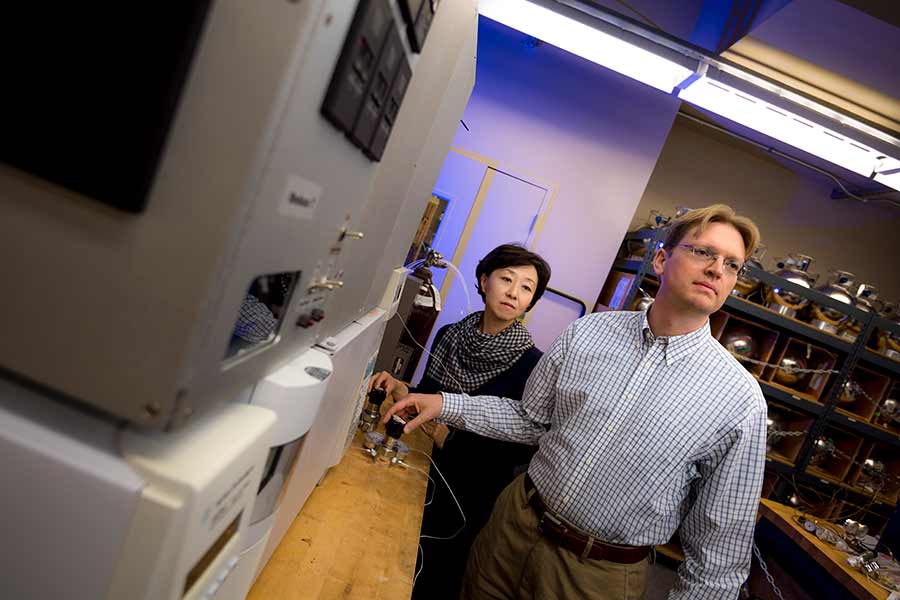Researchers Locate Source of Banned Chemical Emissions
Mapping sources of ozone layer-damaging compound demonstrates improved ability to monitor emissions of environmentally important gases
Published Date
By:
- Robert Monroe
Share This:
Article Content

Photos by Erik Jepsen/UC San Diego Publications
A research group at Scripps Institution of Oceanography at the University of California San Diego is part of an international team of scientists that has located the geographic origin of emissions of a chemical banned by the Montreal Protocol.
Two provinces in China are found to be major sources of new emissions of CFC-11, a stratospheric ozone layer-damaging compound used to make foam insulation, according to the study, which appears today in the journal Nature.
Sunyoung Park, a professor at Kyungpook National University in South Korea who is on sabbatical at Scripps, is a co-lead author of the paper.
“The novelty of this paper is the specification of the location responsible for a major fraction of the global CFC-11 emission increase,” said Park, “and we are the first to quantify the magnitude of the emission increase from eastern China.”

The study “represents an important and particularly policy-relevant milestone in atmospheric scientists’ ability to tell which regions are emitting ozone-depleting substances, greenhouse gases, or other chemicals, and in what quantities,” said Ray Weiss, a geochemist at Scripps and study co-author. “The verification of greenhouse gas emissions is likely to play a prominent future role in international climate agreements such as the Paris Agreement, as countries seek to verify that national commitments of reduced greenhouse gas emissions are actually being met.”
Researchers used data collected by the 13 stations affiliated with the Advanced Global Atmospheric Gases Experiment (AGAGE) network, of which Weiss is a co-leader. In particular, AGAGE stations at Gosan, South Korea and Hateruma, Japan that are located on islands to the east of China revealed surges of atmospheric CFC-11 values beginning in 2013. Other stations in the network showed more steady and generally declining CFC-11 values. Models of atmospheric transport based on weather observations are used to map the sources of these emissions.
CFC-11 had been declining in the atmosphere for decades, a measure of what many regard as the most successful global environmental agreement of all time, but its rate of decline began to slow significantly around 2012. The report is the latest of several new studies and subsequent media investigations that detected increasing levels of this chlorofluorocarbon and then closed in on its sources.
The renewed use of CFC-11 seems to be led by Chinese factories that face pressure to produce increasing amounts of foam insulation for buildings and refrigerators, while facing limited supplies and increasing costs of foam-blowing agents. The banned CFC-11 was less expensive to obtain on the black market than compounds that cause less damage to the ozone layer, Weiss said.

The researchers used measurements of CFC-11 in the atmosphere and high-frequency observations to track a large fraction of the new CFC-11 emissions to the provinces of Shandong and Hebei, located in northeastern China. From 2014 to 2017, the amount of CFC-11 emitted annually to the atmosphere from that region increased roughly seven thousand tons from levels measured between 2008 and 2012.
That amount accounted for between 40 and 60 percent of the total increase in measured global emissions, though it is possible that percentage is actually higher, the researchers said. The researchers said they could not determine where the remaining portion of the rise was coming from because of the sparsity of measurements near other regions potentially emitting CFC-11 such as other parts of Asia, South America, or Africa.
The Montreal Protocol is an agreement among countries to protect Earth’s stratospheric ozone layer, which shields the planet from ultraviolet radiation. It was signed in 1987 and entered into force in 1989. It was ratified by 196 countries and the European Union, making it the first universally ratified treaty in United Nations history.
AGAGE was created in 1990, following predecessor programs that date back to 1978. A consortium of 11 research centers from around the world makes measurements of more than 50 gases emitted to the atmosphere by human activities that contribute to greenhouse warming of the planet and/or depletion of its ozone layer. The AGAGE group at Scripps supports the experimental measurement capability of AGAGE globally. This program is distinguished by its high-frequency, high-precision measurements that make possible the kind of regional emissions modeling exemplified by the CFC‑11 findings.
Share This:
You May Also Like
Stay in the Know
Keep up with all the latest from UC San Diego. Subscribe to the newsletter today.



